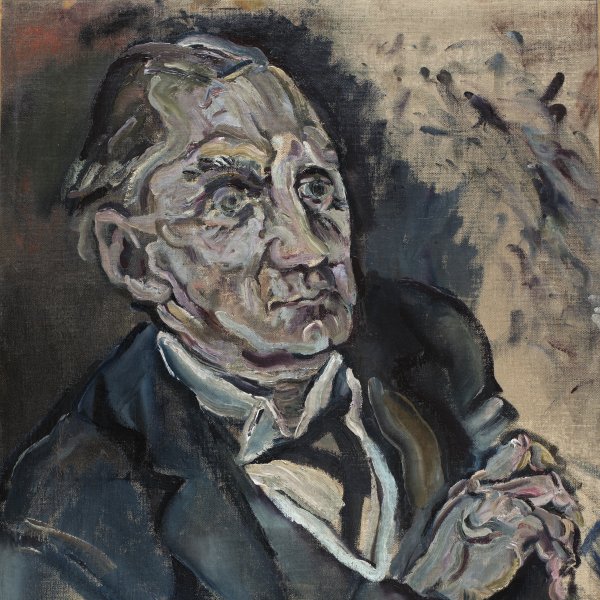Carl Leo Schmidt
Kokoschka began painting portraits in his youth entirely as a self-taught artist. He immediately started applying to this genre his personal formula for the representation of the human psychology, in which physical likelihood is subordinated to the depiction of the feelings of the model. As he himself confessed in his diary, "from their face, from the combination of expressions and movements, I tried to guess the true nature of a person, recreating with my own pictorial language what would survive in the memory".
The portrait of Carl Leo Schmidt (1911) from the Carmen Thyssen-Bornemisza Collection and that of Max Schmidt (1914) belonging to the Museo Thyssen-Bornemisza permanent collection, are two of the three sections into which the Triple Portrait of the Schmidt Brothers was divided in the 1950s (the portrait of the third brother, Hugo, is considered to be missing). Executed with a very fluent technique, with rough lines and very restricted colours, these works belong to the set of psychological portraits painted by Kokoschka between 1909 and 1914, and constitute one of the most important contributions to modern portrait painting.
The Schmidt brothers were the owners of the decoration firm Friedrich Otto Schmidt, founded in Vienna in 1854, and still existing today. The Viennese architect Adolf Loos, Kokoschka's main mentor at the beginning of his artistic career, occasionally collaborated as advisor and designer for that firm and, as Peter Vergo wrote, was the one who managed to obtain this commission for Kokoschka in 1911. According to the inscriptions at the bottom of the painting, the original work was executed in two different phases, and each figure was painted separately. The sketched portraits of Carl Leo (right) and Hugo (left) dated in 1911, were made on the same day, one in the morning and one in the afternoon, as testified by the words below the portraits: "Vormittag" (morning) and "Nachmittag" (afternoon) but, for some unknown reason, were left unfinished. The portrait of Max, the central part of the painting and the only one finished, was painted three years later, on 20 March 1914, as is stated in the inscription below the character.
Carl Leo Schmidt, the youngest of the three brothers, was born in Vienna on 20 January 1867, and was the manager of the family firm and later its owner, after the death of Max in 1935. He was the first to pose for Kokoschka. Of the three, it is the image that looks more like a sketch, and in it we can perceive a clear evolution of Kokoschka's pictorial style with respect to the portraits made in the previous years. The brushstrokes are thicker and more fluent and the figures acquire a more dynamic aspect. The painter portrayed the youngest of the Schmidt brothers full face, with his head slightly to the right so that he is looking at his brother Max, and with his left hand, only sketched with a few lines, raised with a quick movement. Unfortunately, due to the division of the painting into three sections, the dialogue which the artist introduced through the movement of the three characters and the variation in the stylistic language used for each of them to distinguish between the different personalities of the brothers have been lost for ever.
Paloma Alarcó






